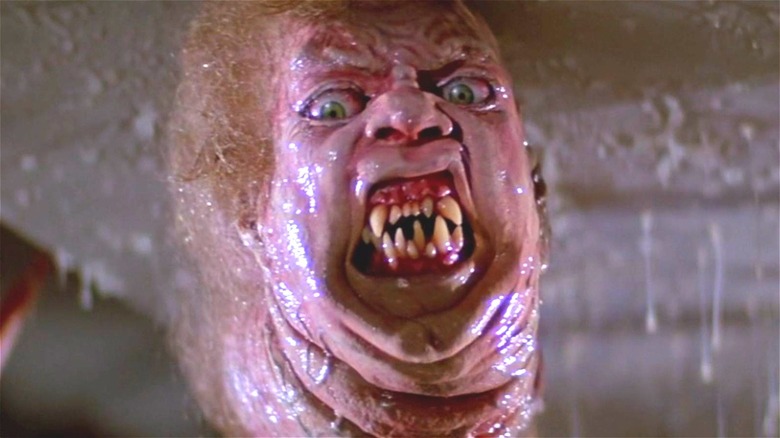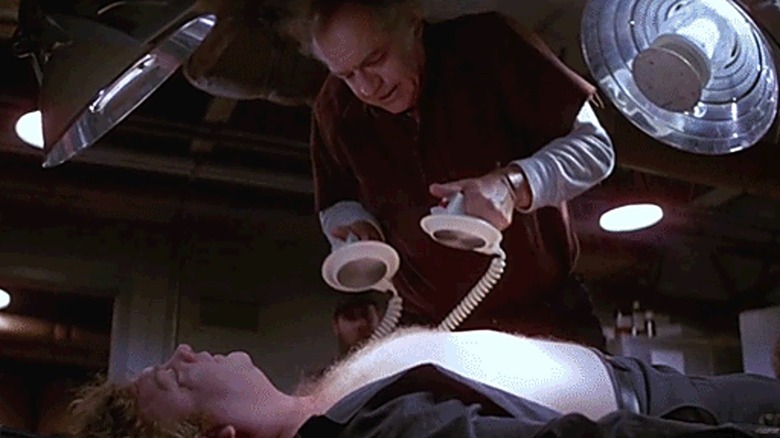How They Really Filmed The Thing's Chest Chomp Scene
Before the mainstream boom of CGI on-screen, filmmakers had to get creative with special effects. At the peak of outstanding special effects is "The Thing," John Carpenter's science fiction horror film. The 1982 movie was initially panned by critics but is now celebrated for its tense atmosphere and Rob Bottin's work on the special effects.
Because of the shape-shifting nature of the Thing, various iterations of monsters were created by Bottin and his team of 35 special effects artists. He worked for 57 weeks, never taking a day off, alongside the committed crew. It was such an intense and tireless process that he was hospitalized afterward with a variety of ailments.
An article from Bloody Disgusting's [It Came From the '80s] series examined the film's special effects, noting that the crew used "seemingly endless quantities of rubber foam latex, fiberglass, plastic, gelatin, creamed corn, mayonnaise, bubble gum, strawberry jam, and more" to achieve its innovative scares.
One of the film's most memorable jump scares comes during the defibrillator scene, where Dr. Copper (Richard Dysart) loses his arms in a set of jaws that emerge from Norris' (Charles Hallahan) chest.
How did they pull off the "chest chomp" scene in "The Thing?" It's more authentic than you might think.
Jaws, Jell-O, and fake arms
The endlessly creative Rob Bottin found a man who had lost both of his arms to act as a stunt double for Norris, allowing a pair of prosthetic arms filled with wax bones, rubber veins, and Jell-O to be chewed up in the mechanical jaws.
Wearing a realistic mask of Dysart's face, the double-amputee was a perfect stuntman for the frightening sequence. After nearly 40 years, the special effects work in the film still holds up. In a 2017 interview with SYFY WIRE, cast and crew members from "The Thing" discussed this, reflecting on how time-consuming the setup was for that scene. Actor Larry Franco said the defibrillator scene was "hard for everybody" because of how meticulous the effects were.
Despite the film's legacy and the acclaimed special effects, Bottin has always remained humble about the work he did. In a 1982 issue of Fangoria, he disagreed with the interviewer that his team had changed the game in any way. He referenced special effects artist Roy Arbogast, who taught him that "it's not a question of whether it's been done before, because it probably has."
"Everything I've put in a movie has been done somewhere else," he said. Despite this nonchalant attitude, "The Thing" is remembered for its perfect storm of special effects.

